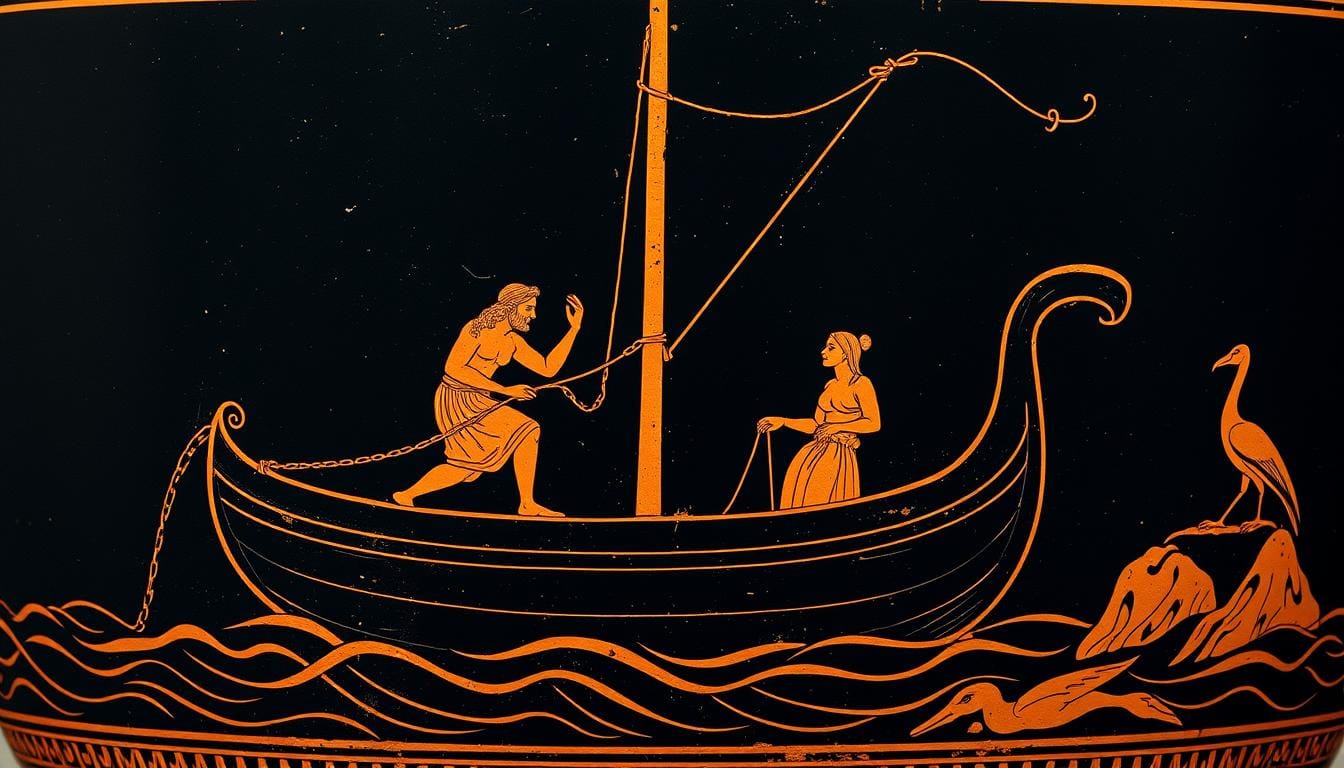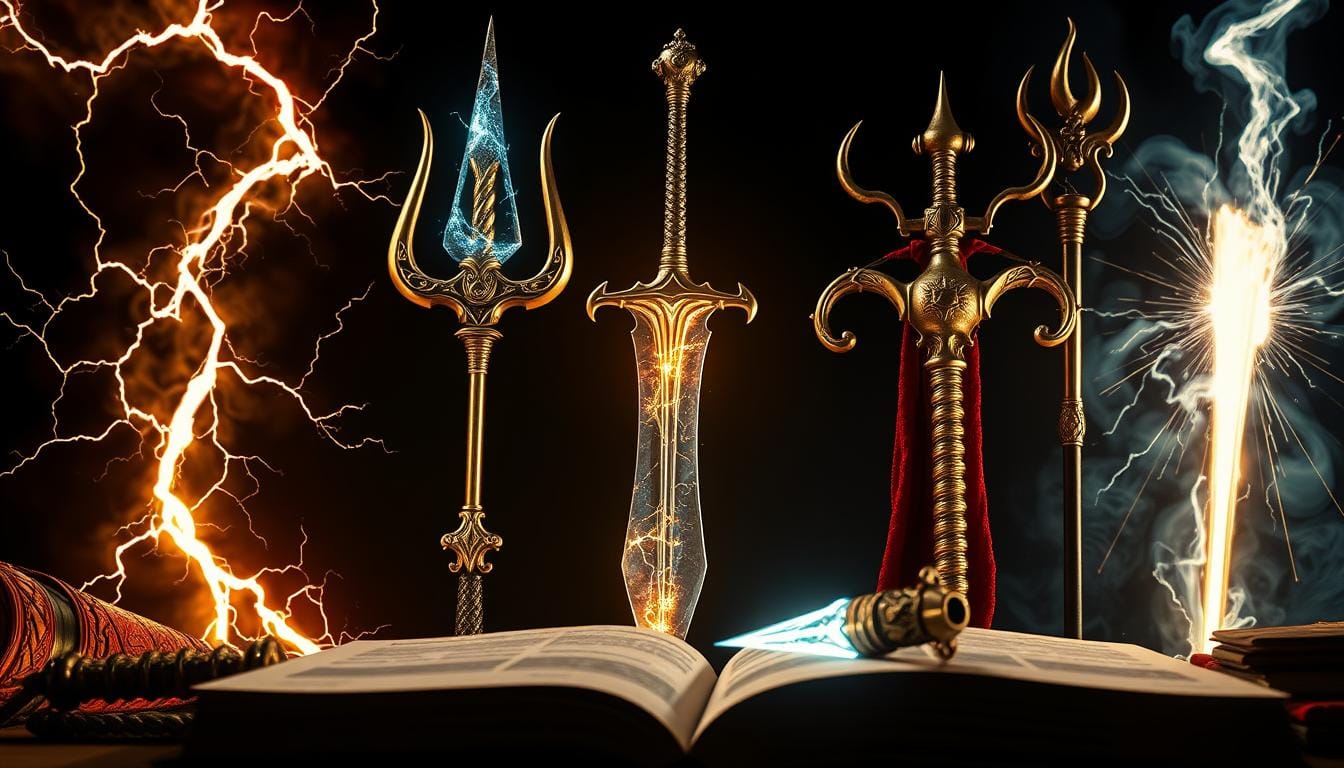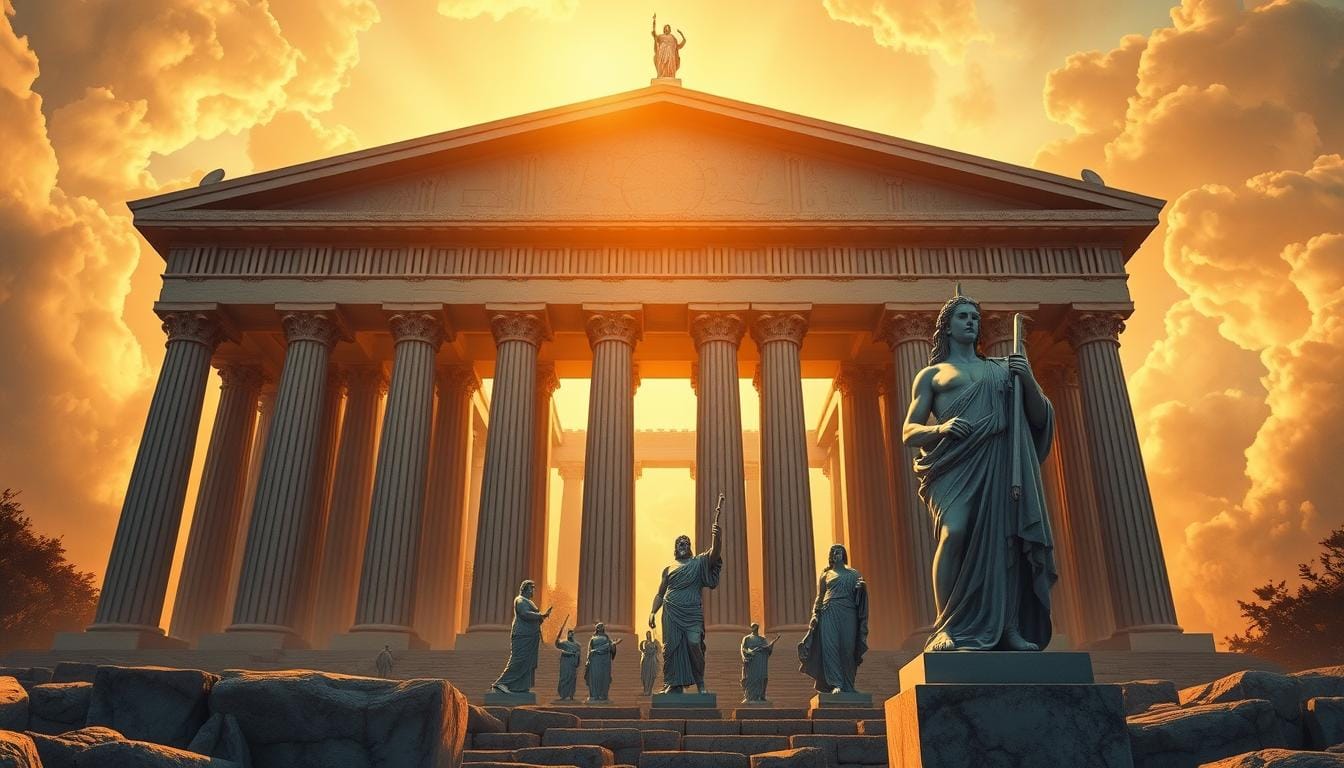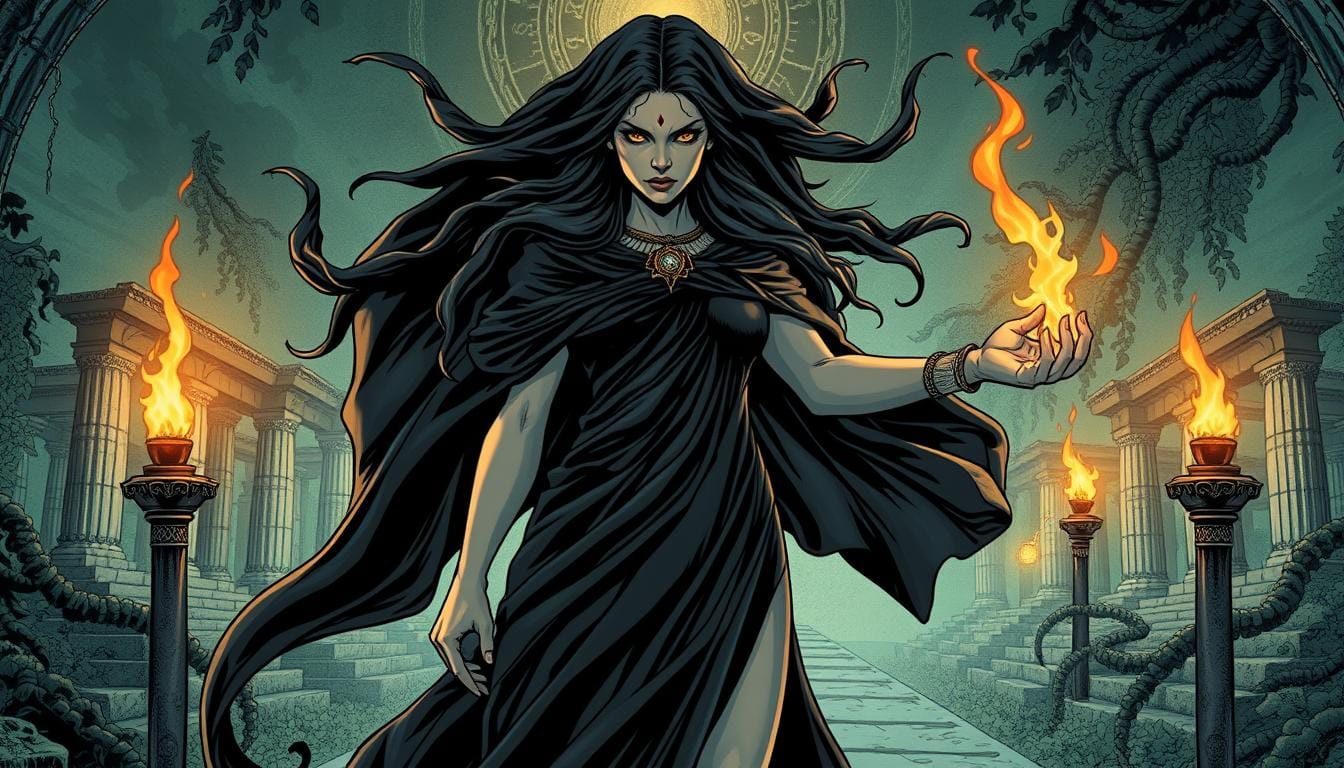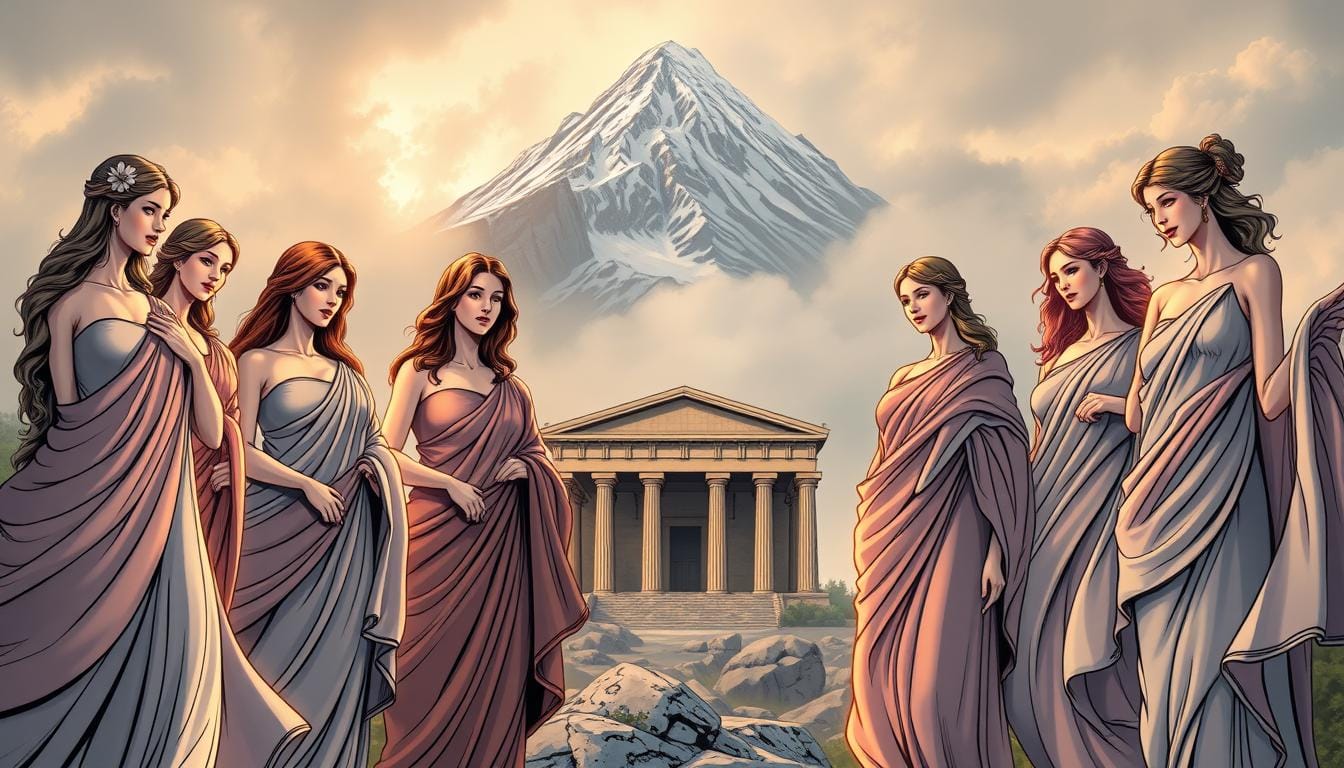In the vast pantheon of Greek mythology, few deities embody the mysterious and primordial forces of nature quite like Nyx, the Goddess of Night and Shadows. Born from the swirling void of Chaos at the dawn of creation, Nyx emerged as one of the most ancient and powerful beings in the cosmos. Her dark presence inspired both reverence and fear, even among the mighty Olympian gods.
This ancient nocturnal goddess represents more than just darkness—she embodies the profound mysteries of the night, the realm of dreams, and the inevitable transition between life and death. Join us as we explore the enigmatic nature of this primordial deity and uncover why even Zeus himself approached her with caution.
Artistic representation of Nyx, the primordial Goddess of Night and Shadows
Origins and Family Ties of Nyx
Nyx stands as one of the most ancient deities in Greek cosmogony. According to Hesiod’s Theogony, she emerged directly from Chaos, the yawning void that existed before all else. This primordial goddess came into being alongside her brother Erebus, the personification of darkness. Together, they represented the fundamental darkness that enveloped the cosmos before light existed.
In a fascinating twist of cosmic balance, Nyx and Erebus became consorts and gave birth to their opposites: Aether (Light) and Hemera (Day). This creation myth beautifully illustrates the Greek understanding of natural dualities—darkness giving birth to light, night producing day.
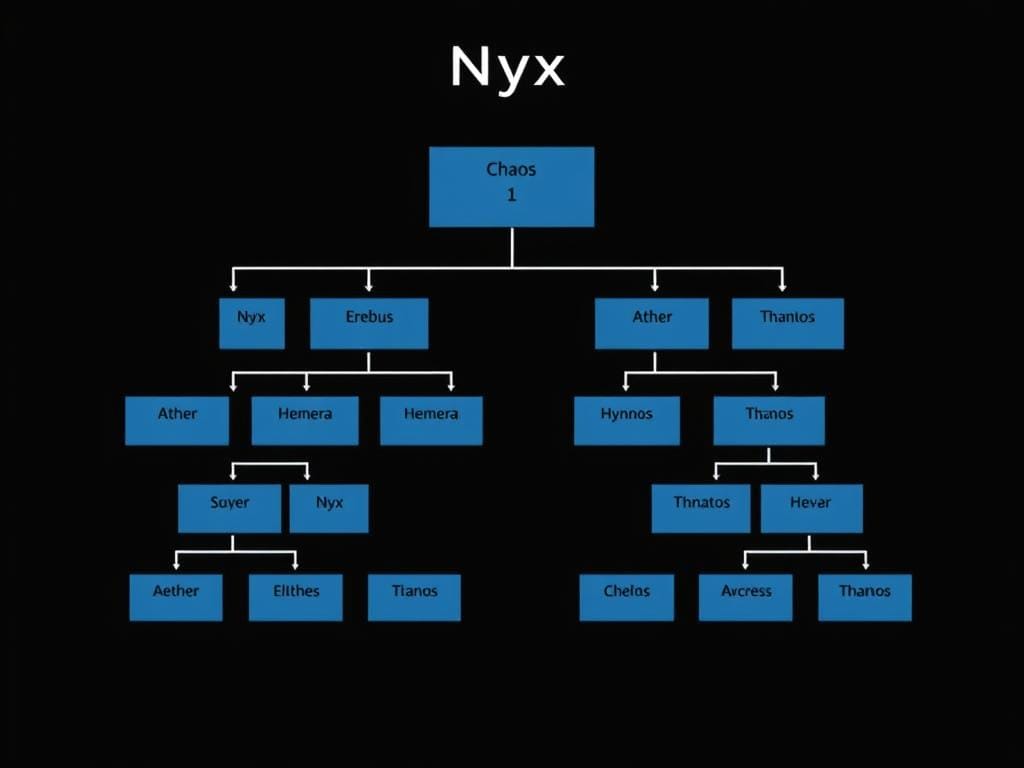
Nyx's Impressive Offspring
As a primordial goddess, Nyx possessed the remarkable ability to reproduce independently. Her children represent some of the most fundamental aspects of human existence—particularly those associated with darkness, fate, and inevitability. Among her notable offspring are:
- Hypnos (Sleep) – The gentle god who brings rest to mortals and immortals alike
- Thanatos (Death) – The personification of peaceful, non-violent death
- The Moirai (Fates) – The three goddesses who control the threads of destiny
- Nemesis (Retribution) – The goddess of divine justice and vengeance
- Eris (Discord) – The goddess of strife and conflict
- The Oneiroi (Dreams) – The gods who deliver dreams to sleepers
- Geras (Old Age) – The personification of aging
- Oizys (Misery) – The goddess of suffering and distress
- Apate (Deceit) – The goddess of fraud and deception
- Philotes (Friendship) – The personification of affection and friendship
This remarkable lineage reveals Nyx’s fundamental role in Greek mythology as the mother of forces that govern human existence. Her children embody both the inevitable challenges of life (Death, Old Age, Misery) and its necessary comforts (Sleep, Dreams, Friendship).
The Symbolism of Night and Shadows
Nyx’s domain extends beyond mere darkness—she represents the profound mystery and transformative power of night. As the personification of night itself, she embodies both its terrors and its protective embrace. The ancient Greeks understood night as a time of vulnerability but also of rest, reflection, and renewal.
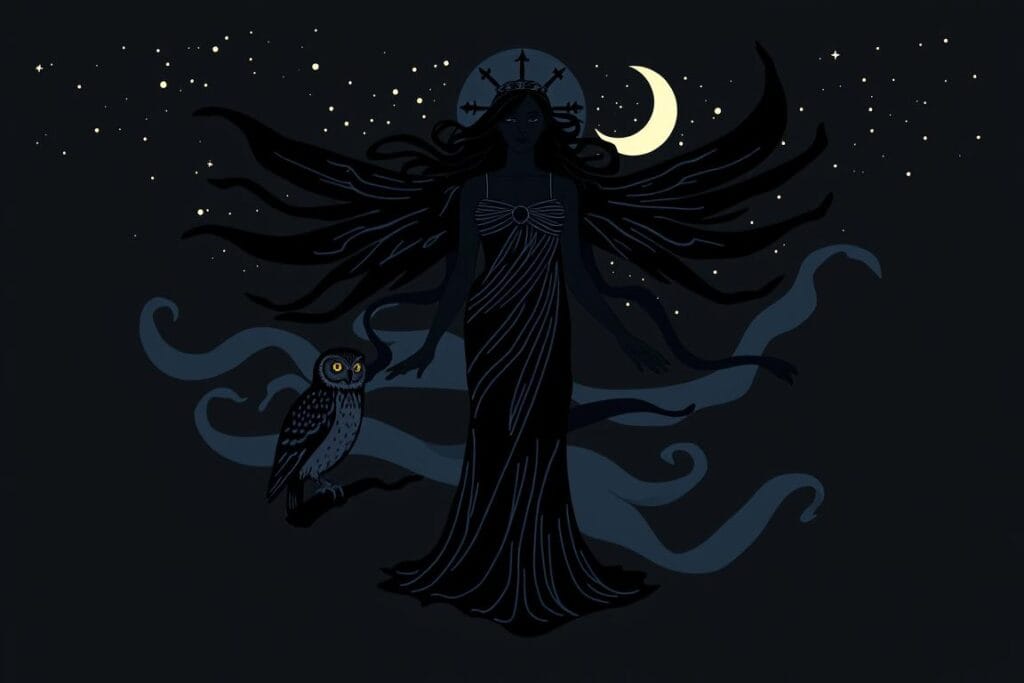
Symbolic representation of Nyx with her primary attributes
Symbols Associated with Nyx
The Night Sky
Often depicted as a dark cloak or veil covered with stars, representing Nyx’s power over all things hidden and unseen. Her dark mists were said to sweep across the sky each evening, obscuring the light of day.
The Owl
As a nocturnal creature associated with wisdom and intuition, the owl became a fitting symbol for Nyx. These birds of night represent the hidden knowledge that comes with darkness.
The Moon
Though not directly ruled by Nyx, the moon is often associated with her as it casts pale light through her domain, creating shadows and illuminating the mysterious night world.
Connection to Sleep, Dreams, and Death
Nyx’s connection to sleep, dreams, and death is profound and multifaceted. As the mother of Hypnos (Sleep) and Thanatos (Death), she bridges the realms of consciousness and unconsciousness, life and afterlife. The ancient Greeks viewed sleep as a “little death”—a temporary state resembling the permanence of death.
Through her children, the Oneiroi (Dreams), Nyx also governs the mysterious realm of dreams—the visions that come to us in slumber. These dream-gods were believed to pass through two gates: one of horn, bringing true prophetic dreams, and one of ivory, bringing false or deceptive visions.
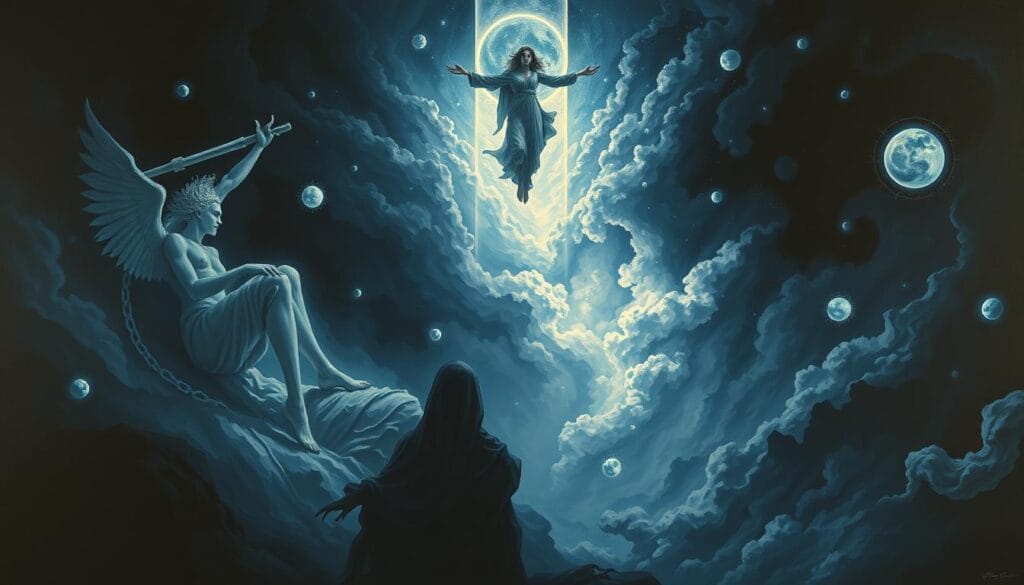
This intricate web of associations reveals Nyx as a goddess who presides over the thresholds of existence—the transitions between wakefulness and sleep, life and death, known and unknown. Her dark domain becomes the canvas upon which these fundamental human experiences unfold.
Key Myths and Stories of Nyx
Despite her fundamental importance in Greek cosmology, Nyx appears in relatively few myths compared to the Olympian gods. This scarcity of stories paradoxically enhances her mysterious nature—she remains in the shadows, powerful yet elusive.
Nyx and Zeus: The Power That Even Zeus Feared
Perhaps the most telling indication of Nyx’s power comes from Homer’s Iliad. In Book XIV, we learn that even Zeus, king of the gods, approached Nyx with caution. The story involves Hypnos (Sleep), who recounts how he once put Zeus to sleep against his will at Hera’s request.
When Zeus awakened and discovered the deception, he flew into a rage and searched for Hypnos to punish him. Fearing Zeus’s wrath, Hypnos fled to his mother, Nyx. Upon seeing that Hypnos had taken refuge with Nyx, Zeus immediately backed down, unwilling to risk offending the primordial goddess of night.
“Zeus, high-thundering, was angry and would have cast me from the upper air to sink in the sea, if Night had not saved me—Night, who subdues both gods and men. I reached her in my flight, and Zeus ceased his pursuit, angry as he was, for he feared to offend swift Night.”
— Hypnos in Homer’s Iliad, Book XIV
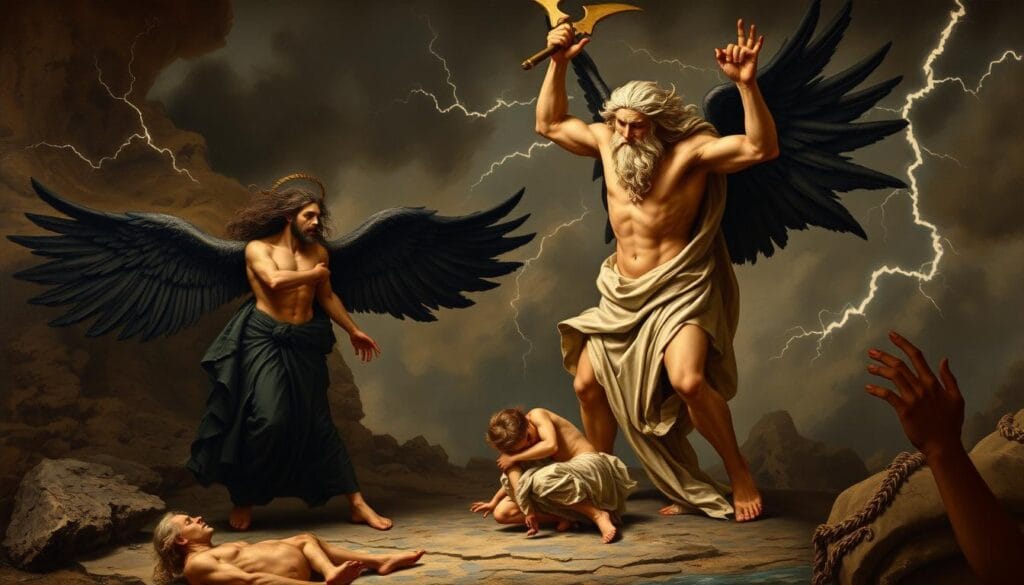
Nyx in the Orphic Tradition
In Orphic cosmogony, Nyx held an even more prominent position. According to some Orphic texts, she was considered the very first principle from which all creation sprang. In this tradition, Nyx laid a silver egg from which Phanes (also called Eros or Protogonos) hatched—the first-born god who created all other beings.
This Orphic version elevates Nyx from merely one of the first beings to the first being—the ultimate mother of all creation. It’s a testament to the profound respect and awe that ancient mystics held for the power of night and darkness.
Nyx and the Underworld
Many ancient sources place Nyx’s dwelling in Tartarus, the deepest region of the Underworld. Hesiod describes how Nyx and her daughter Hemera (Day) would take turns dwelling in Tartarus—when one left to spread across the world, the other would return home, ensuring that night and day never met.
This cosmic dance between mother and daughter maintained the rhythm of time itself, with Nyx emerging each evening to spread her dark veil across the sky, only to retreat at dawn when Hemera brought the light of day.
Nyx Compared to Other Night Deities
Across world mythologies, night deities embody the mysteries and fears associated with darkness. Comparing Nyx to her counterparts in other traditions reveals fascinating similarities and differences in how ancient cultures conceptualized the night.
| Deity | Mythology | Attributes | Similarities to Nyx | Differences |
| Nótt | Norse | Rides a horse named Hrímfaxi that brings night; mother of Day | Mother of Day; personifies night | Less primordial; daughter of giants rather than a first being |
| Nut | Egyptian | Sky goddess who swallows the sun each evening and gives birth to it each morning | Associated with stars and celestial bodies | Represents the sky rather than night specifically; more nurturing |
| Ratri | Hindu | Goddess of night; sister of Ushas (Dawn) | Personification of night; sister relationship with dawn | More benevolent; praised for protection during darkness |
| Selene | Greek | Goddess of the moon | Associated with night sky | Represents only the moon, not night itself; younger deity |
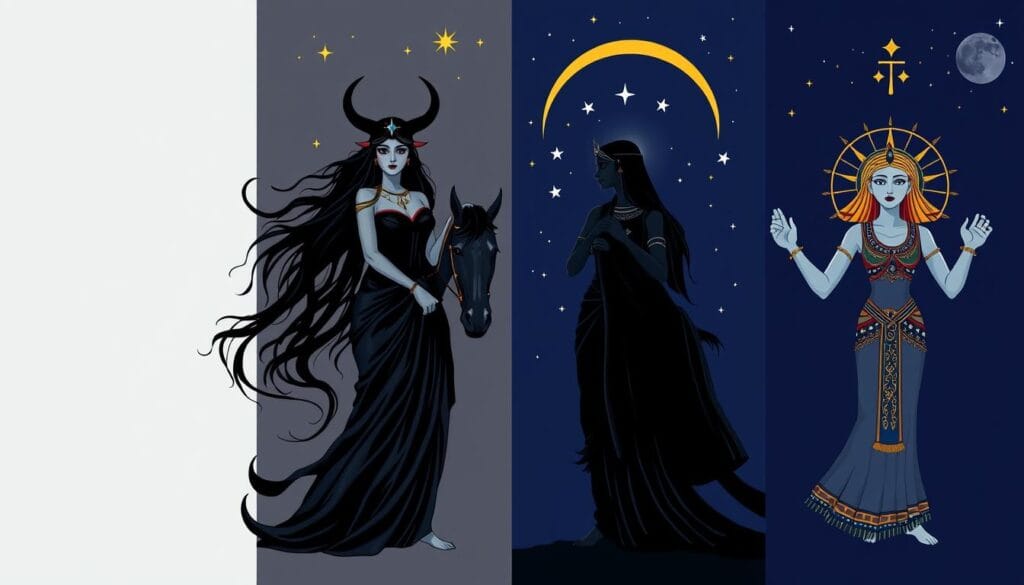
What makes Nyx stand out among these night deities is her primordial nature and her fearsome aspect. While many cultures viewed night deities as protective or nurturing, Nyx retained an element of dread and power that set her apart. Her ability to inspire fear even in Zeus speaks to the Greek conception of night as not merely darkness, but a fundamental cosmic force.
Cultural Legacy and Modern Interpretations
Though not as widely recognized as Olympian deities like Zeus or Athena, Nyx has left an indelible mark on art, literature, and popular culture throughout history. Her mysterious nature and profound symbolism continue to inspire creative works today.
Nyx in Ancient Art
Representations of Nyx in ancient Greek art are relatively rare but significant. She appears on several vase paintings, often depicted as a winged goddess or charioteer. A notable example is a terracotta oil flask from around 500 BCE showing Nyx driving her chariot across the sky as dawn approaches.
The Temple of Hera at Olympia once housed a cedar chest with a carving described by Pausanias as depicting Nyx holding her children, Sleep and Death. This visual representation emphasized her role as mother of these fundamental forces.
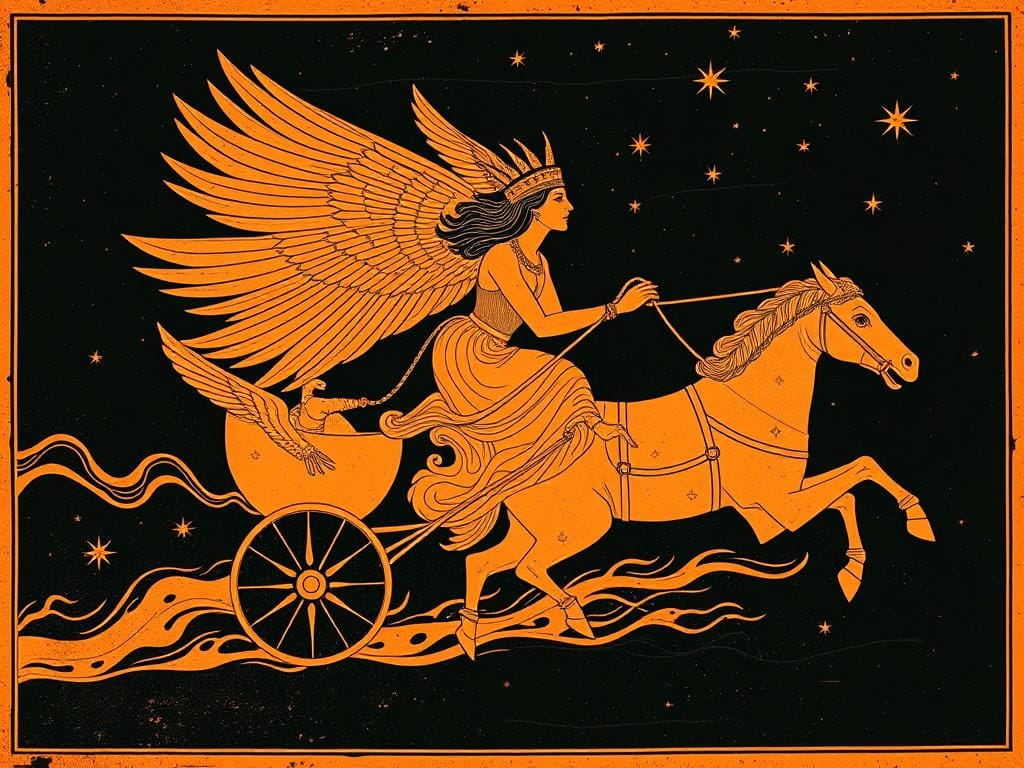
Recreation of ancient Greek artwork depicting Nyx driving her chariot
Literary References Through History
Poets and writers have invoked Nyx throughout literary history. In Virgil’s Aeneid, she appears as a powerful force associated with the underworld. Renaissance poets often referenced her in works about night, dreams, or death.
John Milton’s epic poem Paradise Lost mentions “the wide womb of uncreated Night,” alluding to Nyx’s primordial nature. Romantic poets like Percy Bysshe Shelley and John Keats frequently employed night imagery that echoed the ancient symbolism associated with Nyx.
Nyx in Modern Media
In contemporary culture, Nyx has experienced a renaissance through fantasy literature, video games, and other media. Her mysterious nature makes her an appealing figure for modern storytellers exploring themes of darkness and power.
Literature
Nyx appears in Rick Riordan’s Percy Jackson series and related works, where she is portrayed as an ancient, powerful goddess. She also features in various fantasy novels that draw on Greek mythology.
Gaming
Video games like “Hades” by Supergiant Games include Nyx as a character, often portraying her as a nurturing but mysterious figure associated with the underworld.
Art
Contemporary artists continue to find inspiration in Nyx, creating modern interpretations that emphasize her connection to night, stars, and the mysteries of darkness.

These modern interpretations often emphasize different aspects of Nyx’s character—some focus on her fearsome power, others on her role as a primordial mother figure, and still others on her connection to night’s beauty and mystery. This multifaceted approach reflects the complexity inherent in the ancient conception of Nyx.
Worship and Religious Significance
Unlike the Olympian gods who had widespread cults and temples dedicated to them throughout the ancient Greek world, evidence for the formal worship of Nyx is more limited. Nevertheless, she held significant religious importance, particularly in certain traditions.
Historical Worship Practices
As a chthonic (underworld) deity, Nyx received sacrifices typical of such gods—black animals, particularly sheep, would be sacrificed and fully burned, with the ashes buried in the ground. These rituals would typically take place at night, in keeping with her domain.
The Greek traveler and geographer Pausanias mentions an oracle dedicated to Nyx at the acropolis of Megara. This suggests that at least in some locations, Nyx was consulted for prophetic guidance, perhaps particularly regarding matters of fate, death, or hidden knowledge.
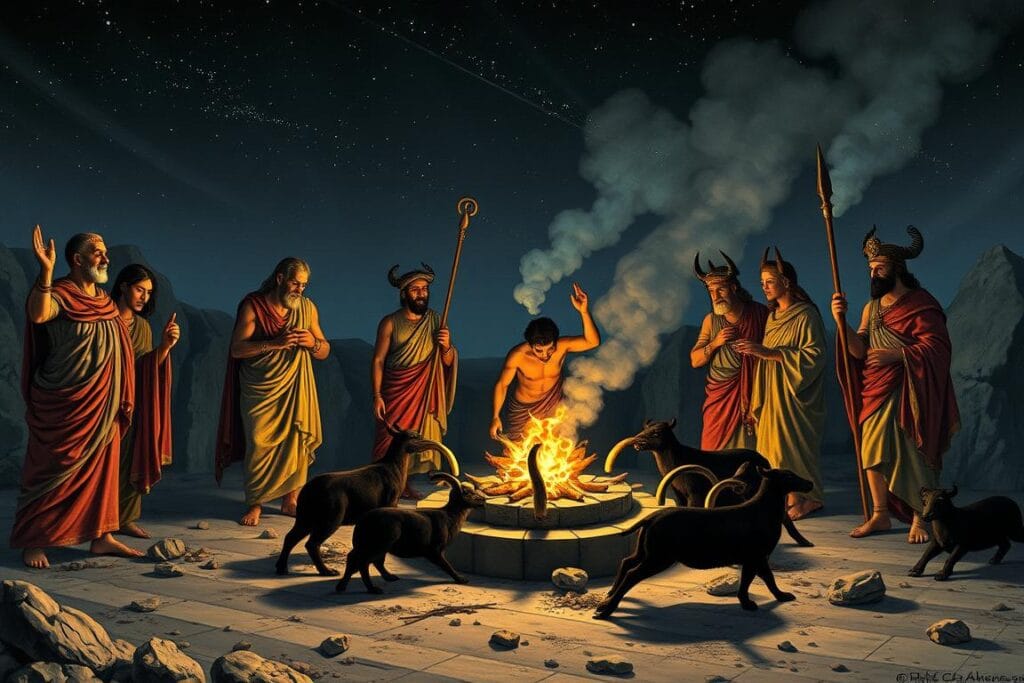
The Orphic Mysteries
Nyx held special significance in Orphism, a mystical tradition in ancient Greece. Orphic cosmogony placed Nyx at the very beginning of creation, elevating her importance beyond even Hesiod’s account. Orphic hymns addressed to Nyx describe her as “parent goddess” and “source of sweet repose.”
“Night, parent goddess, source of sweet repose, from whom at first both Gods and men arose, Hear, blessed Venus, decked with starry light, in sleep’s deep silence dwelling Ebon night!”
— From the Orphic Hymn to Nyx
In Orphic tradition, Nyx was believed to deliver prophecies from her cave in Tartarus. This oracular role connected her to hidden knowledge and divine wisdom—fitting for a goddess who presided over the realm where secrets could be concealed.
Frequently Asked Questions About Nyx
Is Nyx evil in Greek mythology?
Nyx is not considered evil in Greek mythology, though she is certainly formidable and sometimes fearsome. Like many primordial deities, she transcends simple moral categories of good and evil. While she gave birth to some troubling forces (Death, Strife, Misery), she also produced beneficial ones (Sleep, Dreams, Friendship). Nyx represents the necessary darkness that balances light—a fundamental cosmic force rather than a malevolent entity.
Why was Zeus afraid of Nyx?
Zeus feared Nyx because of her primordial power and cosmic significance. As one of the first beings to emerge from Chaos, she predated the Olympians by generations and possessed power that even Zeus couldn’t overcome. In Homer’s Iliad, we learn that Zeus backed down from pursuing Hypnos when he sought refuge with his mother Nyx, showing that even the king of gods recognized limits to his authority when it came to this ancient goddess.
How is Nyx worshipped today?
Some modern pagan and Hellenic reconstructionist groups include Nyx in their worship practices. Contemporary devotees might honor her through nighttime rituals, offerings of dark-colored items (black candles, obsidian stones), or meditation on themes of darkness, mystery, and transformation. Some practitioners associate her with shadow work—psychological exploration of the hidden aspects of the self. However, modern worship of Nyx varies widely depending on individual or group practices.
What is the difference between Nyx and Hecate?
Though both goddesses are associated with darkness, they are distinct deities with different roles. Nyx is a primordial goddess personifying night itself—one of the first cosmic forces to exist. Hecate is a younger goddess associated with crossroads, witchcraft, necromancy, and the moon. While Nyx represents night as a cosmic principle, Hecate governs the magical and liminal aspects of darkness. In some traditions, Hecate was even considered a daughter or descendant of Nyx.
What animals are sacred to Nyx?
The owl is most commonly associated with Nyx due to its nocturnal nature and connection to wisdom and mystery. Other nocturnal creatures like bats and nighthawks may also be linked to her. Black animals of any kind were considered appropriate for sacrifice to Nyx in ancient practice. In modern interpretations, panthers and other black cats are sometimes associated with her due to their connection to darkness and night.
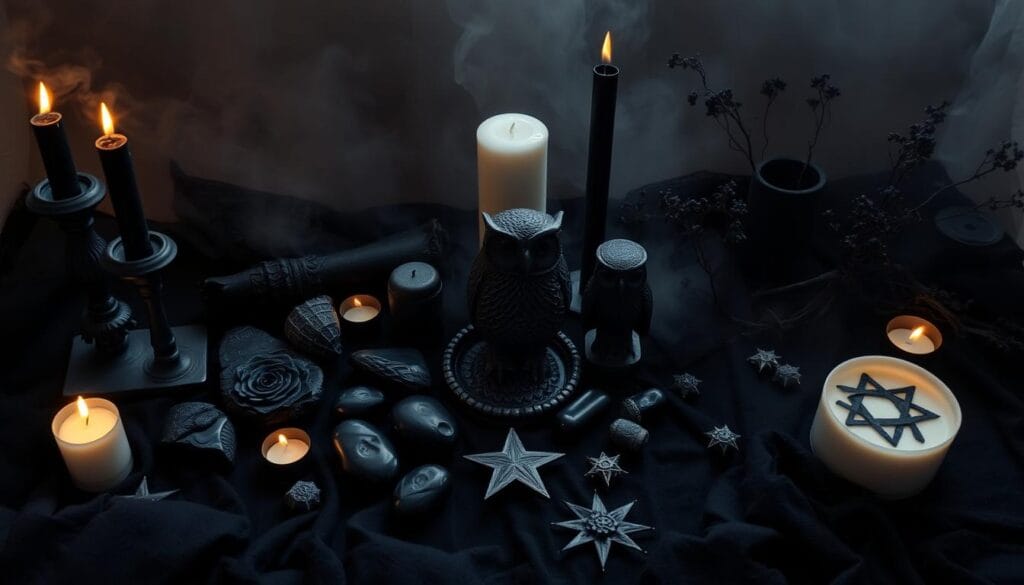
Embracing the Mysteries of Night
Nyx, the Goddess of Night and Shadows, represents one of the most profound and enduring symbols in Greek mythology. From her primordial origins as a daughter of Chaos to her fearsome reputation that gave even Zeus pause, she embodies the mysterious power of darkness that has fascinated humanity throughout the ages.
Her legacy reminds us that darkness is not merely the absence of light but a powerful force in its own right—a time for rest, dreams, transformation, and the revelation of hidden truths. In a world increasingly illuminated by artificial light, perhaps there is wisdom in reconnecting with the ancient reverence for night that Nyx represents.
Whether through art, literature, spiritual practice, or simply gazing at the star-filled sky, the enigmatic presence of Nyx continues to inspire wonder and reflection, inviting us to explore the shadows and discover the gifts that darkness brings.

Explore More Greek Mythology
Want to discover more fascinating stories from Greek mythology? Subscribe to our newsletter for weekly mythology guides, exclusive content, and ancient wisdom delivered straight to your inbox.
